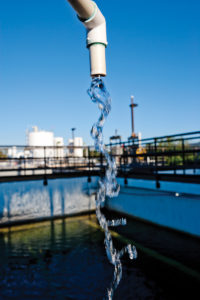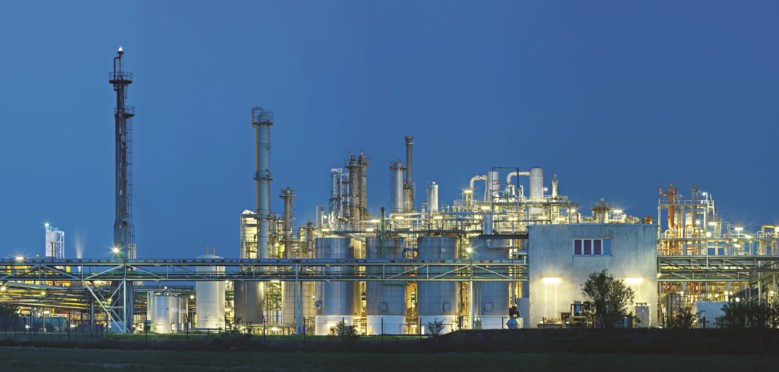Protecting water utilities through smart surveillance
The provision of clean water is undoubtedly a critical aspect of a functioning society, and even this may be understating its importance. It’s an often-quoted fact that a human can survive more than three weeks without food, but only three days without water. And many sectors of industry – not least food production – rely on an uninterrupted supply of water.
The utilities that are responsible for the treatment and provision of water are therefore rightly considered part of a country’s critical infrastructure, and require the same level of protection as power stations, healthcare, telecommunications infrastructure and any other essential facility. It’s why bodies such as the UK’s Centre for the Protection of National Infrastructure – and many others around the world -include water utilities in their scope, and approve technologies related to their protection.
The challenges of protecting water facilities are unique, but the increasing application of smart technologies – including video surveillance, access control and connected sensors – are transforming the security and safety of national and local water infrastructure.
Supporting different categories of water facilities
Every country will have thousands of water and wastewater facilities, from reservoirs containing billions of liters of water to smaller water treatment plants, and often in remote locations. Each will have security, safety and management requirements, but of significantly differing scale and with varying levels of on-site resource.
While all water facilities will serve an important role, a small proportion will be seen by regulators as being of critical importance: widescale disruption of operations or contamination of the water supply at these facilities will present an immediate risk to citizens and businesses. As a result, these sites will benefit from using effective network surveillance and security solutions, as well as likely having on-site security staff.
Smaller water and wastewater facilities are less likely to have permanent staffing, with site managers – responsible for security among a number of other activities – having responsibility for several sites, potentially spread over a wide geographic area. Modern surveillance and security technologies, combined with appropriate automation, will deliver operational efficiencies and cost savings while optimizing security and resilience.
It is also important to note that, contrary to some perceptions, network video surveillance solutions don’t necessarily require a connection to the wider web – they can be effective when operating on a local area network on a single site.
Defending against unauthorized entry

For several reasons, entry to a water facility by unauthorized individuals is highly undesirable. Even if completely innocent – for instance hikers straying off pathways – the safety issues are obvious. For those with more sinister objectives, whether vandalism or looking to contaminate a water supply, the need to prevent entry is paramount, and it starts at the perimeter.
Today’s smart video surveillance cameras – which support powerful ‘edge’ analytics embedded in the cameras themselves – enable a host of new capabilities. Whether protected by a physical fence of otherwise, perimeter protection analytics can detect and alert operators and security personnel should a pre-defined perimeter or area be breached by an individual or vehicle. Thermal cameras and radar can add further dimensions to monitoring during hours of darkness or poor weather.
When combined with network audio such as horn speakers, video surveillance cameras can automatically trigger pre-recorded messages which can alert innocent people that they’ve strayed into a restricted area. Equally, through an awareness that their presence has been detected, audio messages can deter criminal activity. Security personnel can also be alerted to incidents through mobile messaging or in centralized control rooms, quickly reviewing the live video and taking appropriate action.
Increasingly, those with criminal intent are looking to the skies for ways to commit their crimes. For water facilities, the risk is real – it would only take a minimal amount of an appropriate contaminant to render an entire reservoir unusable; an amount that could feasibly be delivered by a drone. For those water facilities deemed critical, therefore, measures to enable drone detection should be considered.
Managing authorized entry to water facilities
Of course, there are many people and organizations who will require legitimate access to water facilities. Often these are third-parties – for instance maintenance firms or those managing water from other organizations. Again, the management of multiple facilities by a small number of site managers can create huge inefficiencies when physical presence is required to allow access to a specific water utility.
A combination of different access control technologies will ensure that access is only granted to those with authorization, whether for a single visit or permanently. License plate recognition can be employed on entrance gates to ensure that approaching vehicles are registered for entry. However, recognizing a vehicle is not the same as verifying the identity of the individual within it.
Increasingly, QR codes are being used as an additional layer of verification and can be integrated with license plate recognition analytics: the driver of a specific vehicle is also sent a unique QR code, stored on their mobile device and used at the point of access. In high-security areas, technologies – including biometrics – can be used to ‘lock’ an individual to a mobile device, ensuring that the person showing the QR codes is the one authorized to use it. License plate recognition and QR codes are also contactless access control technologies, a benefit which has come to prominence during the recent pandemic.
Automated access control technologies increase efficiency in site management, reducing the need for water utility personnel to be present on site for every occasion that a third-party requires access. But it’s equally important to verify that the correct work is being undertaken, and that health and safety guidelines are being adhered to. Again, video surveillance and analytics play a central role.
Visual verification of activities and incidents
When within the water or wastewater facility, it’s critical that personnel are adhering to appropriate health and safety guidelines. While footage from video surveillance can be invaluable in terms of investigating and incidents, prevention is always better than cure. Video analytics can identify whether personnel are wearing appropriate health and safety equipment, with live or pre-recorded messages used to remind or enforce rules.
Video surveillance can also be used to monitor work being undertaken, to verify its full and correct implementation. At an individual level, the value of body worn cameras is increasingly being reviewed as a method to not only verify that work has taken place correctly, but as a valuable tool in training.
Beyond the physical: cybersecurity
It is a sad reality of modern life that any operator of critical infrastructure will have to take account of the very real risk of cyberattack. Whether from those seeking to extort a ransom by affecting operations, or aiming for more serious disruption to a society, criminals and terrorists are constantly looking for weaknesses that will allow them to take control of the operational technology within critical facilities. Water utilities are no exception.
It is essential, therefore, that best practices in relation to the cybersecurity of any connected technologies in a water utility are employed – whether related to operations, IT or physical security and surveillance. Any weakness could potentially be exploited to allow criminals to find their way into operationally critical systems.
The protection of water: is there anything more important?
Water is one of the most important substances on earth and given it makes up 60% of the human body, it could be argued that it is the most important substance on the planet. The term critical infrastructure has rarely been more appropriate.
Those facilities that provide us with water are therefore deserving of the most effective security and safety technology, however large and wherever located. And when the same technologies can also be employed in optimizing operational efficiency, everyone benefits.
More information about Axis solutions for critical infrastructure can be found here.




